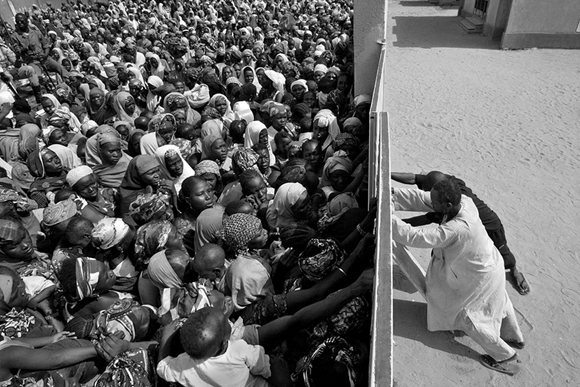The
Population Reference Bureau recently released its annual
World Population Data Sheet, and lo and behold, the world is getting more crowded. By next year, the global total is expected to top seven billion, as we march toward
upwards of nine billion by mid-century.
Much of that growth, of course, will be unfolding across Asia — China and India already account for more than 35 percent of the world’s population, and the two countries will continue to drive global demographic change. But the PRB report emphasized that Africa will also contribute significantly to world’s shifting demographics in the coming decades. By 2050, the continent’s population is slated to double, reaching the neighborhood of two billion. In that time span, the
Democratic Republic of Congo and
Ethiopia are expected to knock Russia and Japan off the list of the world’s top 10 most populous nations.
The Young Continent
Africa’s population growth through 2050 could actually be even greater than PRB predicts, since current projections assume that total fertility rate in sub-Saharan Africa will drop from 5.2 to 2.5 in that time span. The assumption is that as the region’s countries travel farther down the path to economic modernization, access to family planning services will become more widespread, resulting in smaller average family sizes—a trend well-documented in other parts of the developing world.
A slower than expected decrease in total fertility rate (TFR) across sub-Saharan Africa over the next 40 years could render current predictions inaccurate, however. While TFR has dropped significantly over the past 50 years in countries like Ghana (where it is now 4.0), just 17 percent of married women in sub-Saharan African utilize a modern type of family planning. That is one of the reasons Africa as a whole maintains a high average TFR of 4.7 children per woman, and why countries like Niger and Uganda sport some of the highest TFRs in the world (at 7.4 and 6.5, respectively).
According to the 2010 PRB Data Sheet, Africa is also notable for its demographic youth bulge. Of the world’s 10 countries with the highest percentage of their populations aged 15 or younger, nine of them—Niger, Uganda, Burkina Faso, the DRC, Zambia, Malawi, Chad, Somalia, and Tanzania—are on the continent. The question facing these countries is whether their young populations will yield a “demographic dividend” during the coming decades, whereby the large youth bulges translate into a sizeable and productive workforce. Harnessing the economic potential of the younger generation could help accelerate the development process in many of the region’s nations, but it will require significant investment in health and education infrastructure—funding that may prove hard to come by for many cash-strapped governments.
Persistent Divides
Other findings featured in the report involved sanitation and wastewater treatment, where some headway is being made at the global level. The PRB Data Sheet reveals that 43 percent of urban populations in sub-Saharan Africa (and 24 percent of the region’s rural populations) now have access to improved sanitation, while 86 percent of urban populations (and 55 percent of rural populations) have better sanitation services in Latin America and the Caribbean. The figures highlight progress, but reveal the significant divide that persists between urban and rural areas in terms of access to quality sanitation. According to the PRB, some 2.7 billion people—40 percent of the world’s total—still do not enjoy adequate sanitation facilities, and most live in rural areas of the developing world.
Finally, an interesting trend that will impact developed and developing nations alike involves elderly support ratios, or the number of active workforce members between the ages of 15 and 64 available to support a nation’s non-working, 65-and-older population. While rapidly growing countries in the developing world will continue to enjoy high elderly support ratios, a number of countries across the developed world will face a potential financial crisis, as comparatively low support ratios combine with rapidly aging populations to strain available financial resources earmarked for covering pension payments and healthcare infrastructure costs. To make up for the shortfall over the coming decades, the PRB report predicts that some developed nations may be inclined to further throw open the doors to immigration to bolster workforce ranks—a step recommended by Jack Goldstone in ECSP Report 13.
Sources: New York Times, Population Reference Bureau, Population Council, PR Newswire, United Nations Population Division, WHO/UNICEF Jointing Monitoring Programme for Water Supply and Sanitation
Photo Credit: “Famine in Niger, Africa,” courtesy of flickr user liquidslave.

 A Publication of the Stimson Center.
A Publication of the Stimson Center.



